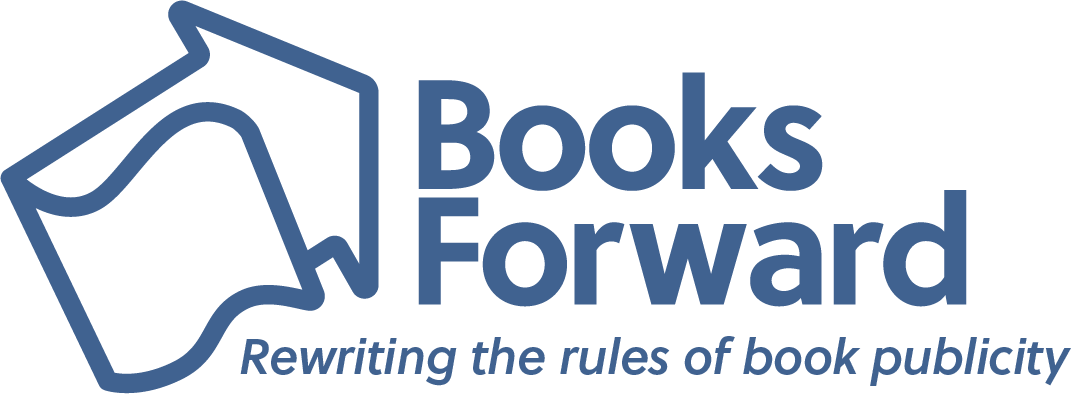When I proposed going on the world’s longest book tour to my publisher, they kindly told me I was nuts. In fact, they convened a conference call to tell me so. My editor, publisher, marketing director, and publicist were all in on it. I remember wondering how I was going to differentiate voices from my position at home—everyone in New York publishing tends to be young and female, or at least female—but I needn’t have worried because they all said the exact same thing. JENNY, STAY HOME.
Some people feel that the book tour is dying, except for the biggest, blockbuster authors, who still don’t make money on a tour—attendees at events would likely have bought the book anyway—but do it to maintain good will with vendors like booksellers, and with fans. Certainly an utter newbie is going to walk into a lot of empty rooms…and that fact winds up dissuading many authors from trying a tour.
But here’s the thing. It took me thirteen years to get published. That’s a lot of rejection—and a lot of desire built up to do everything I could once I was finally given the chance. I also didn’t want to experience the “one and done” phenomenon that often happens when publishing with a Big 5. There’s all this exciting, thrilling lead-up, but after one month, your book has essentially sold most of the copies it’s going to, while vendors, media, reviewers, and readers have moved on to the next batch of titles.
If I was out on the road, appearing at bookstores, libraries, and book clubs, as well as doing local radio, TV, and newspaper interviews around my events, then the buzz and flurry of excitement couldn’t help but continue, right?
Luckily, I had decided to work with an independent publicity firm even before my debut novel was set to come out. And the publicists at JKS Communications didn’t so much as blink when I mentioned the possibility of a very long tour. Well, maybe they blinked…but then they rolled up their sleeves and got to work on a tour so outside-the-box that Shelf Awareness promptly dubbed it “the world’s longest” and asked me to write about my experiences.
My husband and I rented out our house, traded in two cars for an SUV that could handle Denver in February, pulled the kids out of first and third grades to “car school” them in the backseat, and set out on the road for 7 months and 35,000 miles, covering 47 of the lower 48 states. (We couldn’t find a spot to visit in Kentucky).
So what about those empty rooms my publisher was so worried about?
Well, they were right. On some days anyway.
In Goshen, IN there was one person at my event, and he didn’t buy a book. This always troubles me on behalf of the bookseller who has gone to the trouble of setting up an event. (I mean, let’s be honest—one book is not going to cover the cost of my going to Goshen, IN). But this gentleman agreed to buy a book that I recommended, which meant the register rang once that night due to my coming, and salved my conscious. And here’s what happened next.
The man explained to me why he wasn’t buying my novel. It was because he already owned three copies. One to read, one to loan, and one to “keep pristine.” And he had to hurry then—because he had a three hour drive home.
Book tours may or may not make dollars and cents, but they sure make dollars and sense. A sense of the heart—as my encounter in Goshen proved. Their ripple effect can cause a bookseller to keep my book in stock months—even years—after it’s no longer new. At another low turnout event, one of the few people in the audience wound up being a book reviewer for a major paper. I’ve had lines from my books quoted back to me by attendees like I was Taylor Swift and the audience was singing my song. One of the deepest exchanges I ever had was with a reader whose brother committed suicide and read my book to feel less alone.
But there were also days that my publisher couldn’t have anticipated, especially for a debut author. In Oxford, MS, I got to appear on Square Books’ heralded Thacker Mountain radio show. For precisely thirteen minutes, I spoke live on air about my book, before an audience of 250 attendees, with a foot-stomping banjo band behind me. I also appeared at Litchfield Books’ Moveable Feast on paradisiacal Pawley’s Island. My JKS publicists, who set up both these events, referred to them as the “literary lottery”. And I can tell you that I sure felt like I’d won the jackpot, walking into both those rooms.
So, guess what happened after the world’s longest book tour? My debut novel went into six printings in hardcover. Not mega printings—it’s not like everyone reading this post has heard of me, far less read my work. But my book did better enough compared to my publisher’s expectations that when I returned home, they said, “Hey, if Jenny wants to go out with her second novel, we’re not going to stop her.” And by the third book, they helped set up a portion of the tour.
All told, over the course of three releases in two and a half years, I’ve spent 15 months on the road with my family. Does it “work”? I think that depends on what “working” means. My sales spike each time I’m on tour. It would be hard to separate that spike from the fact of having a new book out—except that they spike for my backlist titles, too.
But my rubric has never been book sales. Book sales are a Medusa’s head of interactions, timing, quality, connections, and luck. If we get too bogged down in a pursuit of numbers, we’ll go mad. We writers have to compute our success by a different schema. A mathematics that counts things one by one. Reader by reader, smile by smile, and word by word.
And what about you? What if you’re not quite crazy enough-slash-ready to cram your whole life in a car? The good news is you don’t have to. A mini-version can pack a lot of the same punch. By drawing a radius around your house and planning events for a weekend, a week, or over the course of a month, you’ll be increasing the range of exposure for your book, and making deep, lasting connections for yourself as an author.
Here are 5 Do’s and Don’t’s to make every event count!
- Do be generous: Bring gifts for the bookseller, librarian, or book club leader who hosts you. For instance, for a wintery book, think pouches of hot cocoa in a mug with your book cover on it. At book clubs I do a beribboned “Book Club Bundle”, which is a great way to shed books I’ve collected on the road. At events where there are writers, I offer a “Writer’s Wish List” with a query lesson, coaching session, and ten page manuscript critique for one lucky winner.
- Don’t read at your event. I hear a lot that attendees are bored by the reading portion (I don’t think this is just because I’m a dull reader). Instead, teach a lesson that pertains to something from your book (craft, recipe, genealogy); lead a writing or publishing workshop; act out a dramatic section; make the whole thing Q&A (attendees love Q&A); share your publishing saga.
- Do use AirBnB if you travel. Not only is this often less expensive than hotels, but nine times out of ten we found that the host bought my book, came to my event, and even brought friends.
- Don’t send blasts. I can’t tell you how often I get a Facebook invite from someone who lives in Nebraska, 1500 miles away from me. They’ve clearly just sent it to everyone they know. FB and Twitter allow you to identify people’s rough locations. Personalize your invites and you will have the joyful experience of seeing online friends become real ones.
- Do enlist the support of other authors. When one of us rises, all of us do. If you come anywhere near me, I want to come out and see you, and try to bring a crowd. Your fellow authors make great readers, great attendees, and when they see how much fun you’re having, they may even offer to pair up for an additional event that doubles your exposure in one location.
Jenny Milchman is the author of COVER OF SNOW, which won the Mary Higgins Clark Award and RUIN FALLS, an Indie Next Pick and a Top Ten of 2014 by Suspense Magazine. Her new novel, AS NIGHT FALLS, was published in June, 2015.
She is Vice President of Author Programming for International Thriller Writers, teaches for New York Writers Workshop, and is the founder and organizer of Take Your Child to a Bookstore Day, which is celebrated annually in all fifty states. She is a 2016 Author-in-Residence at JKS Communications. Jenny lives in the Hudson River Valley with her family.


